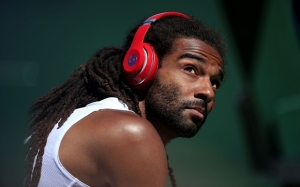Easy Listening Tennis
Tennis is an intensely visual game. You watch your opponent as they strike the ball, hoping to pick up the spin, pace and directionality of their shot, and of course you watch the ball, ideally with the laser-like focus of a hawk on its prey.
But wait. We have other senses as well and they tend to get forgotten in the intensity of our visual concentration. I recently did a little experiment. I maintained my usual focus and then, as I prepared to hit my shot, I switched my attention from visual to auditory. What did the ball sound like when it met my racket? Essentially, I was toggling, dramatically toggling: Visual to here, then click and go auditory, then post-stroke go visual again.
The results were unexpected and extraordinary. I immediately started hitting the ball much more cleanly. I told my playing partner what I was doing and he gave it a try. He, too, experienced a sharp immediate uptick in his ball-striking. This suggested I was onto something. During a break, we came up with two explanations:
First, when you listen closely to something, you get still in your body. Right now, for instance, I’m in a café. When I focus on the music, I stop typing; my spirit goes quiescent. When you switch to auditory mode on the tennis court, it’s not only your spirit that goes into a more still place; your head does, too. Just about every tennis player in the world has a nervous dome. We move our head as we strike because it sort of goes with the overall motion of the body, and on top of that, we want to see the outcome of our shot; we cheat and peek before completing the stroke. ‘Easy Listening Tennis,’ as we came to call it, puts an end to that, or at least reduces Nervous Head Syndrome considerably. Paradoxically, this actually improves our visual performance because we are likelier to keep our eye on the ball as we strike it, not because we’re focusing on the proverbial ‘keeping our eye on the ball,’ but because we’re using our ears and that makes us go still.
Second, the sound the ball makes on impact tells you pretty much everything you need to know about the quality of your strike. The other evening, I was listening to people playing tennis without watching. I could tell what level they were at (and, more specifically, their specific shot strengths) simply by the sound of the ball coming off their racket. When a world-class player hits a power serve, it sounds like a gun being fired. Roger Federer’s forehand has a deep bass thud that I hope someday to hear on a forehand of mine, just once. Easy Listening Tennis turns our attention to shot quality as distinguished from shot outcome. As both a training and performance tool, this makes all the difference. To be more specific, when I serve, one of the main things I focus on is how my swing (and my strings) carve the ball. See the ball, see the racket carve it. My focus, in other words, is visual. Now, if instead I concentrate on how my serve strike sounds, and more specifically if I focus on trying to make it have the ‘right sound,’ I will still be watching the ball but my analysis will be ultimately more effective because for all its essential importance, the quality of ball-carving is only a subset, albeit an important one, of overall strike quality. When I practice Easy Listening Serving, I focus on the higher goal, which is to get as close to that world-class gunshot sound as I can with my aging muscles and imperfect technique. And that has a higher likelihood of improving my performance over time.
This brings us to the spiritual dimension of Easy Listening Tennis. I don’t know any tennis player who doesn’t first and foremost look to stroke outcome as their measure of success. I wanted to hit my approach shot close to the baseline—did it happen? I wanted to get a heavy angle on my crosscourt forehand—did I succeed? This tendency is natural and it’s also important, but it can get in our way. Why? Because something precedes outcome, and that something is execution. We can frame a ball and have a successful outcome. We can win a point because our opponent flubs a shot. In both cases, we may feel successful, but that is true in only a strained sense. Luck is not success. If we want to improve at tennis, it behooves us to focus more on stroke quality and less on stroke outcome. As stroke quality improves, stroke outcomes will inevitably improve as well because there’s this thing called cause-and-effect, right? Pretty much all the great spiritual traditions advise us to detach from outcome and be present to what it is. Easy Listening Tennis brings that simple but profound principle onto the tennis court.
Underlying all this is a foundational life principle that we can bring to bear on the tennis court in our quest for continuous improvement. It’s all about attention. For me, this suggests a wisdom path—staying present (on the tennis court) to the true essentials, not to the competition with its various thrills and challenges, not to the internal dramas that play out in the course of competition (how am I doing? am I worthy? will I prevail?), but to the thing itself, the thing moment that underlies all these relatively superficial distractions, the all-important moment of ball striking racket.
What is the sound of one hand clapping?, the famous Zen koan has it. To which I add this tennis variant: What is the sound of one tennis ball striking your racket?





Leave a Reply
Want to join the discussion?Feel free to contribute!